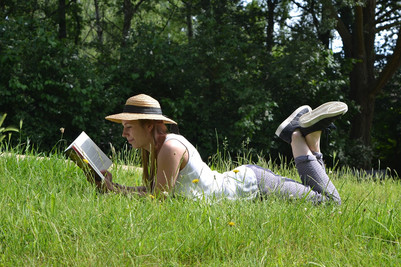
Canvas analyses: cover factor and spinning degree
At the Royal Danish Academy – Conservation, we are performing several tests and analysis of 15 different canvases.
We do this to understand the variety of shrinkage in linen canvases used for canvas paintings due to changes in relative humidity (RH), which again shall provide more detailed knowledge to strengthen the computational model of canvas paintings that we are working on.
Canvas shrinkage can lead to serious damages in canvas paintings at high RH or in connection with water damage; these serious damages can be cracks and flaking of paint, in some cases resulting in paint loss. There are several possible reasons for or factors affecting canvas shrinkage: 1) Pretreatment of fibers, threads or weave, 2) Swelling of fibers, which is also related to tightness of weave, 3) Twist of the yarns (the degree of spinning), also due to changes in production, as well as the industrialization of yarn and fabric production.
We try to address all these explanatory factors that affect canvas shrinkage by conducting various tests and analyses. In this blogpost we will explain a bit about the analyses related to weave geometry, including tightness of weave and twist of yarns.
One way of measuring tightness of weave is by looking at the so-called ‘cover factor’ of the fabric. Cover factor is a term from the textile industry that can be defined as the area of fabric actually covered by fibers and yarns presented in percent. In other words, cover factor is the ratio of surface area actually covered by yarns, to the total fabric surface area, and is expressing how dense the canvas is. Twist of yarn can be expressed by the so-called ‘spinning-degree’, which is a measure of how hard the threads are spun. Both cover factor and spinning-degree can be analyzed by means of measurements on macro photos of the canvases using the program ImageJ.
Below you see macro photos of five different canvases that clearly illustrates the diversity of canvases. The photos show a section of 10 x 10 mm. All of the canvases are plain weave made of linen, but the cover factor (how dense they are) varies, as do the spinning degree. The thread count, which is the number of threads in each direction per 10 mm, also varies. Cover factor for the five canvases is 96,07%, 74,46%, 101,68%, 97,50% and 74,02% respectively.





A closely woven canvas is more prone to shrink than a loosely woven canvas. This can be explained by the mechanisms of swelling of the fibers and yarn at high moisture content, usually above 80-85% RH. When the yarn starts to absorb moisture, swelling of the yarn diameter begins. This means that the threads are getting broader in diameter, which is prolonging the way around for the transverse threads, making them to crimp in length. This crimp of the transverse yarns in the weave induces contraction or shrinkage in that direction. Tightly spun yarns and closely woven canvases will shrink more, as there is less intrinsic free space, or separation between the yarns, to take up for the swelling fibers, than in a loosely woven canvas.
The cover factor and spinning degree analyses are only part of the series of analyses and tests that we are doing, and in the end, they will be used together with the other results, to understand the variety of shrinkage of canvases and hopefully to deduce what are the most important factors.
















